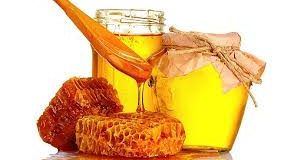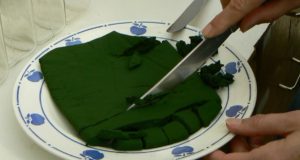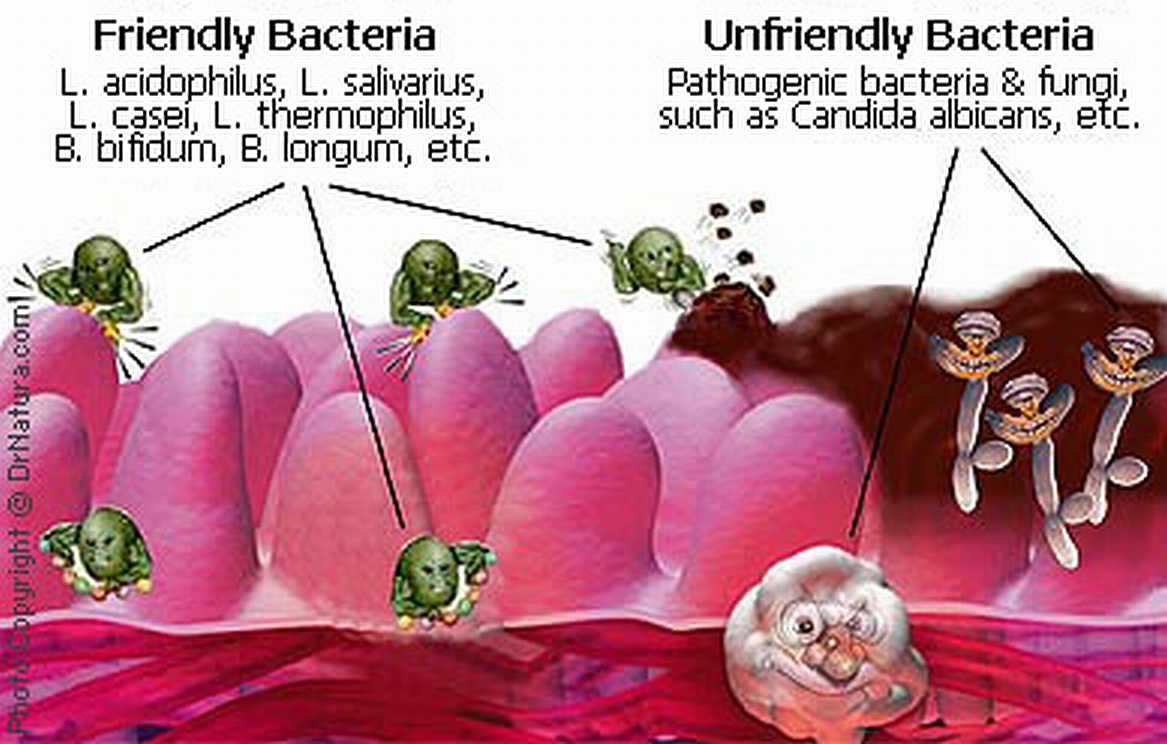
The heavy metal lead is naturally found in the earth; in rocks, soil, rivers, lakes, seawater, and even the air (dust). It has no taste or smell. It is the heaviest of all non-radioactive metals. It is found in virtually everything you eat, drink, and breathe. During the Twentieth Century the earth became “coated” in a layer of lead due to the mining and burning of fossil fuels and combustion of leaded gasoline. Fortunately, over the last 30 years efforts to reduce lead contamination have accelerated. In a perfect world we would not be exposed to lead at all, as there is no use for lead by the human body. High lead exposure may lead to neurological damage and high blood pressure. Unfortunately, we do not live in a perfect world. We have “soiled our nest.” However, we are able to limit our exposure to lead, despite a baseline level that will always exist. And, even though there will always be lead in our food, water, and air, it does not have to be toxic levels. Our food and water are safe for consumption. There are dangerous, life-threatening aspects to our food and beverages with which we should be more concerned than the current levels of lead.
High-glycemic foods (simple sugars, low to no fiber), trans fats, and a depletion of nutrients from our diets are much more concerning than the amount of lead in our food today, and have caused, and continue to cause more death and disease than lead ever has or ever will. Obesity, atherosclerosis, heart disease, cancer, and diabetes are result of high-glycemic foods and trans fat. Ironically, the high-glycemic processed foods contain LESS lead than the complex carbohydrates and food made with whole grains. We all know it is important to focus on a healthy diet of fruits, vegetables, and whole grains, and we should continue to focus on these foods. The reason the healthier, whole grain foods contain more lead than the processed foods is because the plants pull out minerals, including lead, from the soil. And, the whole grains, with relatively shallow root systems, take up the lead that is found in the top few inches of the soil. The more unprocessed the food (i.e., whole grains), the more lead it may contain. However, the lead levels are usually far from toxic!
In no way am I saying that lead is safe, or not a health concern. It obviously is. However, due to the clean up effort in the U.S. and other progressive countries the amount of lead contamination has dropped, and the amount of lead contained within our food, beverages, and water has declined to levels not associated with death or disease.
Another major source of lead is cigarette smoking. Five hundred micrograms of lead is obtained with each inhalation of cigarettes, and 1000 micrograms of lead is contained in just one pack of cigarettes. Most of the lead that is inhaled during smoking is immediately exhaled, but a concerning amount is obviously getting absorbed through the lungs. A smoker may be absorbing more lead each day from smoking than all of their food and drink sources combined. Despite the lead exposure from smoking, much more death and disease comes about through all the other toxins in cigarette smoke (that cause oxidative damage) than from lead toxicity.
For over 2500 years humans have worked with lead. Utensils, cups, plates, and pottery have all historically been made out of, or included lead. We now know this is dangerous. Old china, cookware, and pottery were glazed with lead, that provided a unique luster. However, food that sits on such cookware will absorb lead. The longer food is in contact with these lead-containing objects the more lead that gets into the food. Heating the food in lead-containing cookware will increase lead absorption. Therefore, beware of what cookware and plates are used to heat up and eat food.
The real contamination of our planet came during the 20th Century. From 1920 to 2000, over 300 million tons of lead was mined and distributed throughout our environment. It was distributed throughout the atmosphere via combustion of leaded gasoline, burning of fossil fuels (coal), burning rubber, metal (brass and steel) factories, lead paint, manufacturing and improper disposal of batteries, lead plumbing through which our drinking water flows, lead in the solder used in making the seams holding our cans of food, …and as mentioned, our cookware, pottery, and glassware.
Tetra-ethyl and tetra-methyl lead placed in gasoline started in 1923, with billions of tons of lead released into the atmosphere from car and truck exhaust in all countries throughout the world. A layer of lead settled upon the entire surface of the earth; both land and sea. The top few inches of soil contains the most lead, with the most contaminated areas being the soil next to roadways and factories. Lead-based gasoline was phased out in 1971 in the U.S., as well as in most other countries. Some countries have significantly lowered the level of lead in their gasoline, and some countries, particularly those in Africa, have made no changes and continue to use leaded gasoline.
Plants absorb minerals from the soil. Plants with shallow root systems, such as grass, including grains, absorb the minerals found in the top few inches, which is where most of the lead is located. It is important not to eat food grown near highways, mines, landfills, old city lands, or gardens near old homes, recycling and munitions plants or factories, as these are the soils with the highest lead content.
Over the last three decades the U.S., and many other countries, have dramatically reduced lead contamination, and crops are grown in “safe soil.” In 1951, the use of leaded paint ceased. (Again, it was used because of the cheap glossy coating it provided. Some countries, such as China, still use leaded paint for this reason.) Though not 100% lead free, the plants and grains grown in the U.S., and other responsible countries, contain “acceptable,” or non-toxic levels of lead. The concern for lead contaminated crops remain in countries that still use leaded gasoline and paint.
Dirt and soil have 10 to 100 times the amount of lead than what is naturally found in food. Children under the age of 5 are most susceptible to lead because they put objects in their mouths that have been on the ground or in the dirt. And, too often the child will put dirt itself in his mouth. Actually, it was this “dirty habit” that led to the discovery that lead was neurotoxic. It was the child that developed permanent neurological deficits from eating significant quantities of leaded paint chips that had fallen off the wall and into the dirt that alerted the medical community to the health hazards of lead.
Despite the reduction of lead in our environment and the elimination of dirt from our diet as we age beyond a toddler, we still eat, drink, and breathe lead every day. The majority of lead entering our body is from food. However, we also eliminate lead everyday. Lead that is not absorbed is eliminated in our feces. Lead that is absorbed is eliminated in our urine, sweat, skin, hair, nails, and via the gall bladder through the breakdown of hemoglobin that binds to lead. For the great majority of us, the amount of lead ingested every day is equaled by the amount of lead eliminated. Toxicity occurs when the amount ingested exceeds the body’s ability to eliminate it.
Lead is found throughout our bodies. It is found in our skin, our muscles, organs, blood, and other soft tissues, but mostly it is found in the mineralized areas of our bones. We all have lead in us, the question becomes, is it toxic? Since we get the majority from our food, how much is too much, and how much is acceptable.
As the environment has been cleaned up, the amount of lead in our food and water has declined. In controlled (safe) drinking water the level of lead is currently limited in the U.S. to 0.015 ppm (0.010 in California). That’s the acceptable level for water, and that mostly comes from lead in plumbing (and some lead that has been leeched from the ground). However, our food, both meat and plants, particularly the whole grains, contain the lead. Fortunately, the amount of lead in the food is now “safe,” meaning it is thought not to cause harm or disease.
There are a few designations for measuring lead content, one is the proportion of lead to all other components in any material, …in terms of parts per million (ppm). One part per million corresponds to 1 milligram per gram (1/1000 of a gram), or one microgram per gram (1/1,000,000) of material. The other unit is total measurement of lead, in grams or micrograms, depending on the amount present. There are also measurements for the amount of lead in air and in blood (micrograms per deciliter).
The World Health Organization (WHO) established the “tolerable weekly intake” level for lead obtained from food at 1.5 mg (1500 micrograms), corresponding to a daily lead intake of just over 0.2 mg (200 micrograms). Although many parts of the world have not met these standards, most countries, as in the U.S. have. Therefore, a non-pregnant adult who is consuming less than 200 micrograms of lead per day can feel secure that their food is safe.
In the U.S., current lead levels found in food range from 0.1 ppm to 0.3 ppm, and thus most foods meet the safe standards established by WHO. An American adult who consumes about 1 kg of food (which is average), with a lead level of 0.1 to 0.3 ppm in “clean food,” consumes at between 0.1 to 0.3 mg (100 to 300 micrograms) per day. That is our current baseline, and is not thought to cause harm.
As our environment continues to be cleaned up, future “acceptable levels” of lead will be lowered to less than 50 micrograms per day for non-pregnant adults, less for pregnant women, and even less for children.
In the meanwhile, it is normal and “safe” that the more fruits, vegetables, and whole grains, the more the lead content that is consumed. The more junk food and sugary (simple carbohydrate) beverages one consumes the less lead is consumed; however, the health cost is greater for those consuming the later. The point is, do not be afraid to eat your fruits, vegetables, and whole grains, or meal-replacement drinks made from grains, containing complex carbohydrates and fiber. Your health will benefit greatly from eating these foods despite the relatively small amount of lead.
The adult body can eliminate 300 micrograms (and more) lead per day, preventing lead from concentrating and causing harm. Only high lead exposure leads to neurological problems in children (and fetuses), and high blood pressure in adults.
What about meal replacement drinks? Healthy meal-replacement drinks have complex carbohydrates and protein from from grain. These meal-replacement drinks should not be confused with calorie-enhancing drinks (simple sugars and no fiber) that are used to increase weight in the elderly and sick. These same sugary (simple carbohydrate) commercial drinks can cause weight gain, glucose intolerance, and oxidative stress. It is always better to focus on meal-replacement drinks with complex carbohydrates, fiber, and healthy protein. Meal-replacement drinks that are used to lose or maintain weight will naturally contain some amount of lead. This is no different from food. The bright side to quality manufactured meal-replacement drinks is that they contain LESS lead than what a regular meal might contain.
Low-glycemic carbohydrates, whether in food or calorie-enhancing commercial drinks have less fiber, and therefore cause a rapid rise in blood sugar and insulin. The repetition of spiking blood sugars and insulin is insulin and glucose intolerance, diabetes, obesity, and heart disease. Concentrating on healthy foods, high in fiber, complex carbohydrates, healthy protein, will do just the opposite. The drink that contained all high-glycemic sugary carbohydrates (and no fiber) is most likely to cause fat production and oxidative damage through spiking of insulin levels. However, which is better, to obtain harmless levels of lead (less than 100 micrograms per day) by consuming low-glycemic, high-fiber foods, or to eat a poor diet with high-glycemic foods? Other than smoking, obesity and high-glycemic foods are the biggest contributors to nearly every major chronic degenerative disease and most deaths today. Lead is not a major factor in today’s disease process (except in high contamination areas).
Given that there is a “non-harmful” background level of lead in all foods, do NOT stop eating fruits, vegetables, and grains (except those grown in contaminated soils) and low-glycemic, high fiber meal-replacement drinks. For example, suppose a particular healthy meal-replacement drink were to contain 6 to 7 micrograms of lead per serving, and if that person were to consume that drink three times per day, for a daily total of 21 micrograms of lead, that is still FAR LOWER consumption of lead than the average 100 to 300 micrograms per day of lead obtained in the average adult American diet. In addition, that same amount of lead would easily be eliminated on a daily basis, therefore no harm, and all benefit!
Another way to look at it, a small amount of lead in a meal-replacement drink would be a relative protection from you getting higher levels of lead by eating your normal foods!
You can further reduce your absorption of lead through the consumption of specific supplements. Calcium and vitamin C, to name just two nutrients, block the absorption of lead in your intestines. So, make sure you take a good supplement with healthy levels of calcium (at least 1000 mg per day) and vitamin C (at least 1000 mg/day), along with a complete pharmaceutical-grade, guaranteed potency nutritional supplement program.

Source by Ladd McNamara, M.D.
 Vitamin Agent The Health & Naturalistic Source
Vitamin Agent The Health & Naturalistic Source





